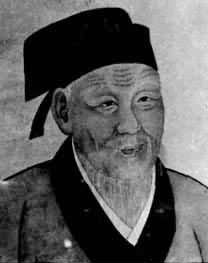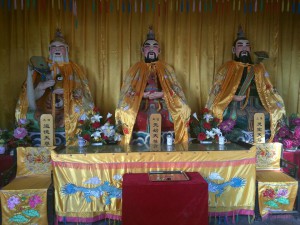Over the past several years the North American tea industry has taken great strides toward a renewed sense of internationalism and cooperation with traditional tea producing regions in Asia such as China and Japan.
This excellent development has also come with a renewed interest in different genres of tea such as Oolong, Pu’er, high quality green tea and so on. There are now many people travelling to Asia to learn about tea and there are many people creating media about this fascinating subject.
A serious problem with this development is that most of the information about the Chinese tea industry being published in North America as partial and sometimes out and out fabricated. The Chinese tea industry is an extremely complex place with its own standardization methods, rules, regulations, prices, and variations. The nascent North American tea media is not helping in the dissemination of accurate information about Chinese tea and often instead tends toward propagandist tactics either used to increase hits on blogs, or worse yet, to sell more tea. Blogging and selling are good things, but we should try to improve the overall knowledge about tea in North America, and not just create controversy and self serving propaganda.
A recent blog post doing its circulation online proposed that due to over farming and other regions, it was impossible to find Tieguanyin tea of the same quality available thirty years ago. This post is an attempt to address the reasons why this assertion is wrong and how we can come to understand the inner workings of the tea industry, its recent history, and hopefully how we can appreciate our tea more and talk less uninformed trash.
Tea is a really wonderful beverage and has a profound history of development from the time before even the word “Cha” entered into common use, up until the late dynasty period and modern times. Tea has always changed in character and never stayed exactly the same, in fact, the ancient tea of the Tang dynasty would hardly be recognizable to modern day Chinese tea enthusiasts.
Tea and change are inexorably connected and need to be considered when we undertake the study of the “spirit leaf.”
The modern Chinese tea industry is predicated on two big concepts:
– Infrastructural development
and
– inter-regional tea drinking.
To unpack these concepts a bit,
it used to be the case that most provinces had some sort of native tea crop, be it the green teas of central China, the Oolong of the South, or the flower teas of North China, each major area had its own unique style of tea and tea culture. Although inter-regional tea trade has been occurring for more than 1500 years, the face of modern Chinese tea drinking and that of even thirty years ago are totally different.
As an example, it used to be the case that the people of Shanghai typically drank Biluochun green tea from Suzhou Long Ting and Long Jing tea from Hangzhou Xihu. This is because these two regions are very close to Shanghai. In the last twenty years, the Shanghai tea scene has expanded and now it is possible to get teas from every region of china and even from places like Taiwan, which were previously not available in mainland China.
Because of the expanded choice that inter-regional tea importation has given people in terms of what teas are available and by what medium they are enjoyed, the Shanghainese tea scene is now very complex and there is much more to tea in Shanghai than just South Eastern Green teas like long jing and bi luo chun.
This trend is not just in Shanghai, it is national and even international now, with the development of large and small scale tea exportation by Chinese and foreign companies.
With this trend, there has been created a much larger market demand than previously existed, which has lead to a supply and demand problem in Chinese tea.
For instance, the viable land available to make traditional long jing tea in hangzhou is not big enough to produce all of the tea demanded by the Chinese internal market, let alone the foreign market. Thus, long jing tea is now grown in many parts of China, from Fujian to Yunnan and many place in between.
This means that certain characteristics of the standard of the tea have undergone change over the years.
As many people will know, it is possible for an expert worker to control many aspects of tea production, but one thing that they cannot change is the taste made by a specific terroir.
For instance, Tieguanyin, which is traditionally only grown in the high mountain area of Anxi Fujian, is now grown all over Fujian, Guangdong, Hunan, and Hubei, as well is in other more far flung places in West China. The taste of this tea is by definition different from the traditional teas grown at the top of Anxi and as such, concepts surrounding standardization in the tieguanyin industry must change.
Traditional tieguanyin requires at least two weeks to process and round the clock supervision, but a tea industry based on demands for large yields cannot possibly live up to such stringent standards, thus, tieguanyin production practices have also changed dramatically over the years.
This does not mean that the overall quality of tea has gone down though, because it is still possible for tea lovers to find high quality, original terroir teas made in traditional ways by expert artisans. The key difference between the era of regional tea drinking and the current inter-regional tea drinking era is actually found in price.
While it used to be the case that it was once possible to obtain one pound of xinyang maojian green tea in henan for the equivalent of a few cents American, now, to find even the most basic Maojian tea, not grown in Xinyang, it now costs at least a few dollars, and high end original source tea can cost hundreds of dollars a pound, even at wholesale.
Why did the difference happen?
this difference was created by complex trends, but two that come to mind are inflation of the Chinese RMB and according higher wages for tea workers, and the development of inter-region tea markets which create much larger stresses on farmers to produce yields capable to being exported all over China and not just in the specific areas that their tea is grown.
This does not mean that it is not possible to find great Maojian tea in Xinyang which would impress even the most stubborn of traditionalists.
There is plenty of great tea in China and it is readily available for those who are willing to go to the cost and effort to find it.
The main difference is that now there is also plenty of average tea which anyone can buy, regardless of their level of discernment in the tea industry.
It is important to note here that the main use of Chinese tea in China is day to day drinking and that the number of serious tea aficionados is relatively small in comparison to people just looking for a drink. This harkens back to the old saying that there are three things Chinese people can’t do without, rice, vinegar and tea. Tea is a cultural requirement for many people and is the convoluted and gilded ceremonial culture which many western tea drinkers romanticize it to be.
Common tea drinking calls for common tea and good tea is usually reserved for special occasions, gifts, and for those who make a hobby of tea drinking.
There is a special myth in the tea world these days that there was a mythic period of tea making quality which existed before the Liberalization of China in the 1980s, and this idea is something which we need to do away with as quickly as possible.
Anyone who has seen old photos of tea production in South China and Taiwan will know that the automation of certain aspects of tea making have greatly improved the quality of tea.
for instance, it was once a requirement at Lugu in Taiwan that the tea was to be trampled by foot and rolled by hand. Not only did this make much less clean tea, it also made looser balls and a much lower standard of quality, with no real ability to control size of tea, roll, breakage, uniformity of oxidization and much more.
Automation and modern farming methods have been an overall benefit to the tea industry and have made for a much more consistent standard of tea. We mustn’t pine for something which simply wasn’t as good as it is now.
The main problem with the tea industry in China is knowledge. If you don’t know tea, you don’t know where to get tea, you don’t know what tea is supposed to look like, smell like, taste like, and feel like, then you simply can’t find good tea.
The tea industry is not set up for hopeful foreigners to just walk into and take away the highest grade crops and most amazing knowledge. It is a commodity business which has internally consistent standards, prices, variations and is quite complex and hard to study.
I see a big trend in tea media these days to find some aspect of Chinese tea agriculture and write dark criticisms of it without having really done any serious research into how tea is standardized and sold in China.
If we want to develop a high quality approach to Chinese tea in North America, we need to improve our knowledge and understand tea from the perspective of the Chinese tea industry, rather than from the perspective of our own romantic inclinations and desire to appear to have secret information passed down by mysterious Chinese friends on far away mountains.

